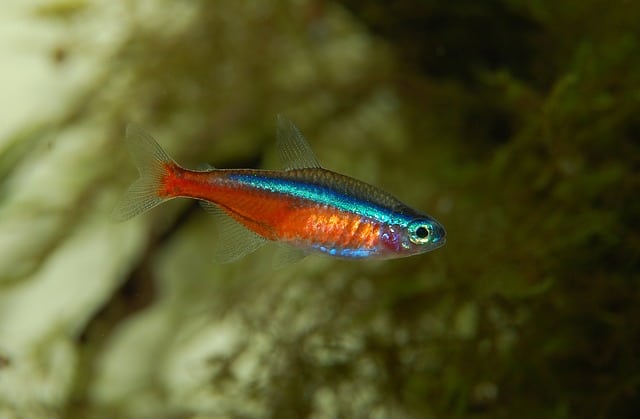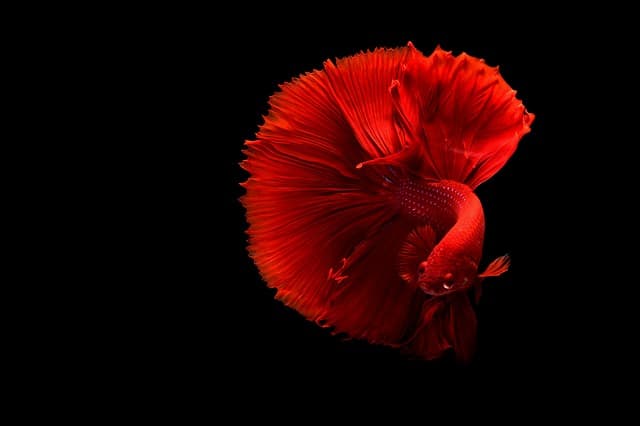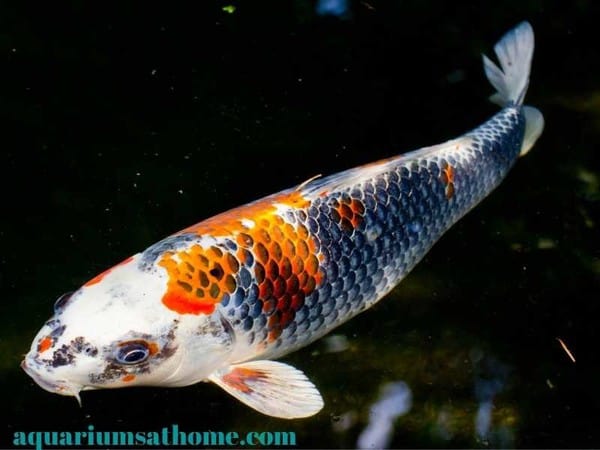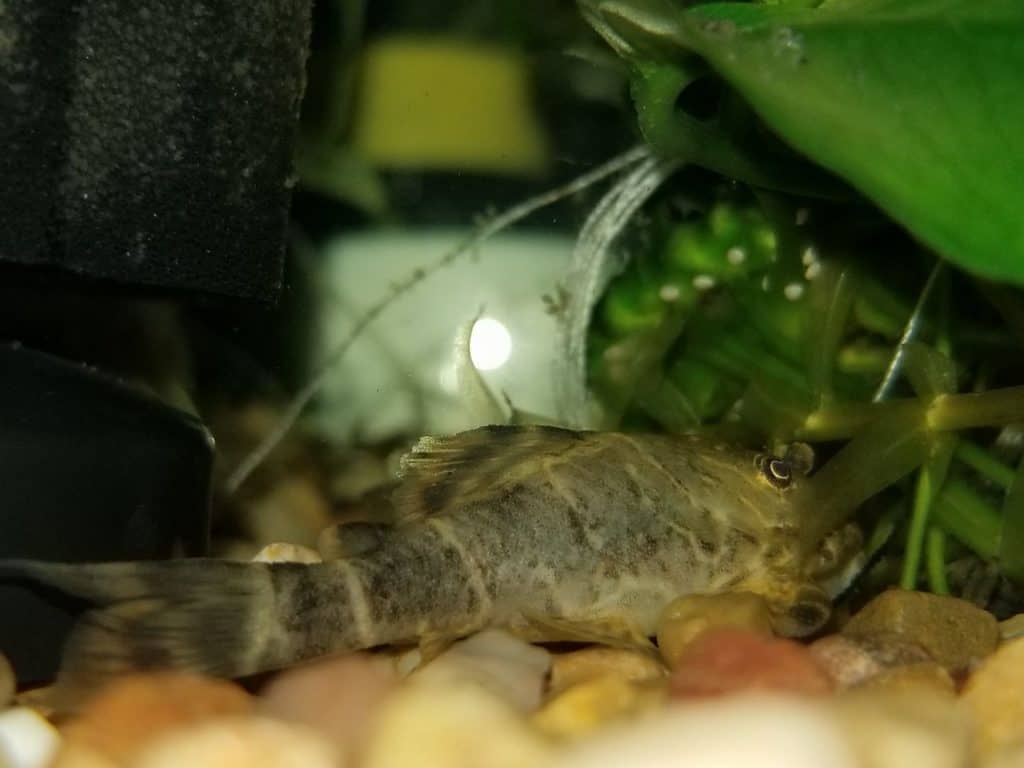Black Skirt Tetras, known for their striking appearance and peaceful demeanor, are a popular choice among aquarium enthusiasts. Their ease of care and fascinating breeding behavior make them an ideal addition to any tank.
In this comprehensive guide, we’ll delve into the intricacies of breeding these beautiful fish and provide you with all the information you need to ensure their health and happiness.
Introduction to Black Skirt Tetras
Black Skirt Tetras (Gymnocorymbus ternetzi) are small freshwater fish native to South America, specifically found in the Paraguay and Guaporé river basins. They are characterized by their elongated bodies, distinct black markings, and graceful movements.
These tetras are schooling fish, preferring to be kept in groups of five or more, which helps reduce stress and displays their natural schooling behavior in the aquarium.
Setting Up the Perfect Tank
Before embarking on breeding Black Skirt Tetras, it’s crucial to provide them with the ideal tank environment. A tank size of at least 20 gallons is recommended for a small group of tetras.
Ensure the tank is equipped with a suitable filtration system to maintain water quality and adequate oxygenation. Keep the water temperature between 72°F and 78°F and maintain a slightly acidic to neutral pH level (6.5-7.5).
Feeding Black Skirt Tetras
A varied diet is essential for the health and vitality of Black Skirt Tetras. Offer them a combination of high-quality flake food, frozen or live foods such as bloodworms, brine shrimp, and daphnia.
Feed them small amounts multiple times a day, only providing what they can consume in a few minutes to prevent overfeeding and water quality issues.
Breeding Behavior of Black Skirt Tetras
Breeding Behavior of Black Skirt Tetras is a fascinating aspect of keeping these fish in a home aquarium. Creating an environment conducive to breeding is key, which involves providing plenty of hiding spots and plants to mimic their natural habitat.
During courtship, males exhibit vibrant colors and actively pursue females, engaging in elaborate mating displays. After fertilization, the eggs attach themselves to plant leaves or substrate within the tank.
It’s crucial to remove adult fish post-spawning to prevent them from consuming the eggs. Additionally, maintaining a dimly lit tank helps prevent the growth of fungus on the eggs, ensuring their successful development.
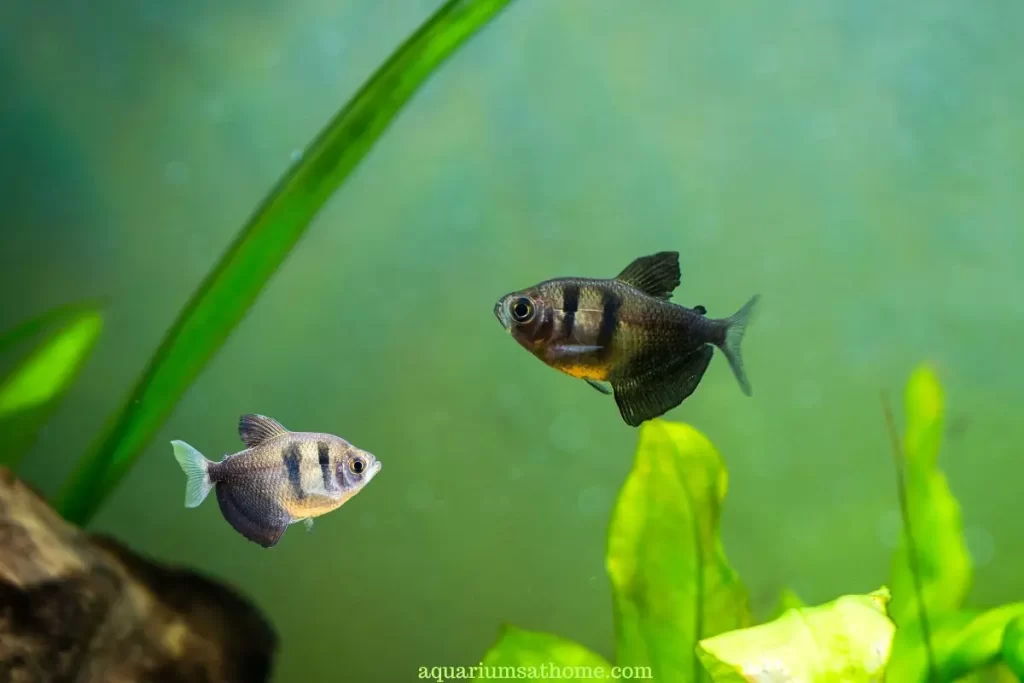
Maintaining Water Quality
Maintaining pristine water quality is paramount for the health of both adult tetras and their fry. Perform regular water changes of 25% every two weeks and test the water parameters regularly for ammonia, nitrite, and nitrate levels.
Keep the tank well-aerated and consider adding live plants to help absorb excess nutrients and provide oxygen.
Common Health Issues and Remedies
Like all aquarium fish, Black Skirt Tetras are susceptible to certain health issues such as ich, fin rot, and parasites. Keep a close eye on their behavior and appearance, and promptly address any signs of illness.
Treatments may include medicated foods, aquarium salt baths, or commercial medications. Quarantine new fish before introducing them to the main tank to prevent the spread of diseases.
Enhancing the Habitat
Creating a natural and stimulating environment is essential for the well-being of Black Skirt Tetras. Add live plants such as Java fern, Anubias, and Vallisneria to provide hiding spots and grazing areas.
Incorporate driftwood, rocks, and caves to mimic their native habitat and encourage natural behaviors such as exploration and foraging.
Tips for Successful Breeding
To increase the likelihood of successful breeding, carefully select healthy adult tetras with vibrant colors and robust fins. Provide them with a varied diet rich in protein to enhance fertility and egg production.
Monitor the tank closely for signs of spawning behavior, such as the male chasing the female and the female scattering eggs. Once spawning is observed, remove the adults to prevent egg predation and monitor the eggs closely for signs of fungus.
The Role of Lighting and Temperature
Proper lighting and temperature play crucial roles in the breeding behavior of Black Skirt Tetras. Provide them with a dimly lit environment to mimic dawn and dusk conditions, which can trigger spawning behavior.
Maintain stable temperatures within the recommended range to prevent stress and ensure optimal breeding conditions.
Breeding Challenges and Solutions
While breeding Black Skirt Tetras is relatively straightforward, breeders may encounter challenges along the way. These may include infertile eggs, egg fungus, or aggressive tank mates disrupting the breeding process.
Patience and careful observation are key to overcoming these challenges. Seek advice from experienced breeders or online forums for guidance and support.
Don’t miss this complete Black Skirt Tetra Care Guide after your done with this article.
Understanding Black Skirt Tetra Genetics
Black Skirt Tetras exhibit a variety of color variations, including black, white, and albino strains. These color variations are influenced by genetics, with certain traits being passed down from parent to offspring.
Selective breeding can be used to enhance desirable traits such as vibrant colors and finnage. However, it’s essential to maintain genetic diversity to prevent health issues and preserve the integrity of the species.
Creating an Ideal Breeding Environment
To create an ideal breeding environment for Black Skirt Tetras, provide them with ample space and hiding places to reduce stress and encourage natural behaviors.
Consider using breeding mops or spawning sites such as fine-leaved plants or mesh grids for the eggs to adhere to.
Ensure proper water flow and filtration to maintain water quality and oxygenation levels during the breeding process.
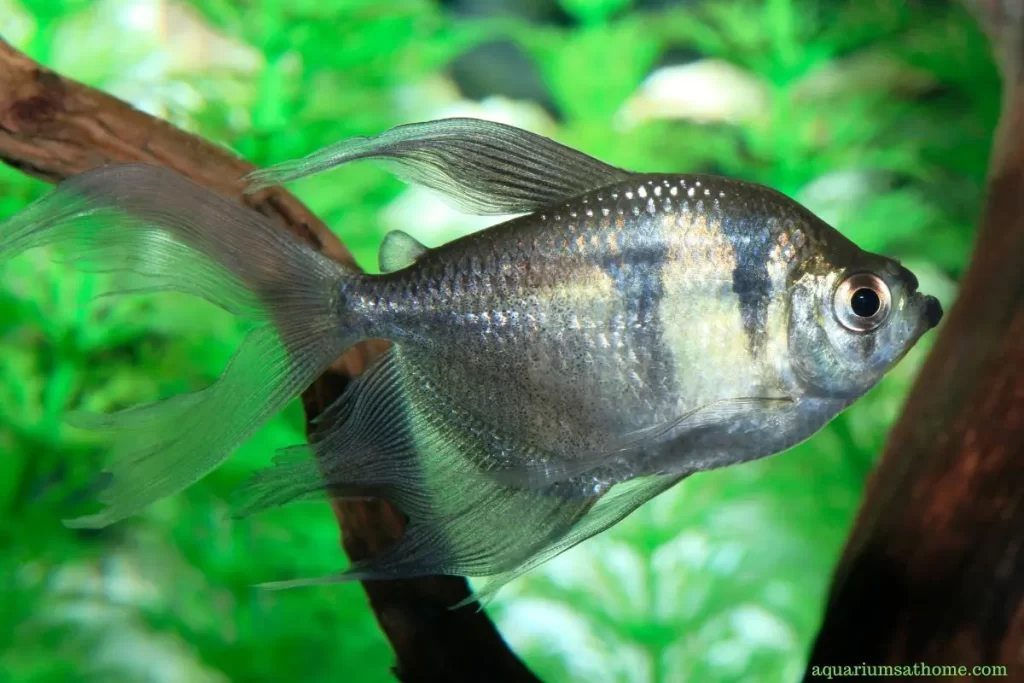
Preparing for the Arrival of Fry
Once the eggs have hatched, it’s essential to provide appropriate care for the fry to ensure their survival and growth. Set up a separate fry tank with gentle filtration and cover the intake to prevent fry from being sucked into the filter.
Offer them finely powdered fry food or infusoria for the first few days, gradually transitioning to larger foods as they grow. Maintain pristine water conditions and perform regular water changes to support their development.
Here is a table that summarizes the above sections for easier reference.
| Topic | Description |
| Tank Setup Requirements | Tank size: 20 gallons or larger, Water parameters: Temperature 72°F – 78°F, pH 6.5 – 7.5, Filtration |
| Feeding Recommendations | Offer high-quality flake food, frozen or live foods such as bloodworms, brine shrimp, and daphnia |
| Breeding Tips | Provide ample hiding places and plants, Monitor for spawning behavior, Remove adults after spawning |
| Common Health Issues | Ich, fin rot, parasites, Symptoms: Behavioral changes, visible signs on fins or body, Treatments |
| Enhancing the Habitat | Add live plants like Java fern, Anubias, and Vallisneria, Incorporate driftwood, rocks, and caves |
| Tips for Successful Breeding | Select healthy breeding pairs, Provide varied diet rich in protein, Monitor tank closely for spawning |
| Understanding Genetics | Color variations influenced by genetics, Selective breeding for desirable traits, Maintain diversity |
| Ideal Breeding Environment | Ample space and hiding places, Use breeding mops or spawning sites, Proper water flow and filtration |
| Preparing for Fry Arrival | Set up separate fry tank, offer finely powdered fry food or infusoria, Maintain pristine water quality |
Breeding Black Skirt Tetras Responsibly
As responsible fish breeders, it’s crucial to prioritize the health and welfare of Black Skirt Tetras and their offspring. Avoid inbreeding by introducing new genetic lines periodically and carefully selecting breeding pairs.
Ensure that you have suitable homes lined up for the offspring before initiating the breeding process. Consider donating excess fry to local aquarium clubs or reputable fish stores to prevent overcrowding and promote responsible fishkeeping practices.
Conclusion
In conclusion, delving into the world of Breeding Black Skirt Tetras offers aquarists an immensely gratifying journey, regardless of their expertise level. Ensuring the well-being of these captivating fish entails providing them with meticulous care, an environment mirroring their natural habitat, and unwavering attention to detail.
By adhering to these principles, you can successfully nurture and breed Black Skirt Tetras while also contributing to their conservation. It’s imperative to uphold water quality standards, closely observe breeding behaviors, and seek guidance from seasoned breeders as needed.
With perseverance and dedication, the joy of witnessing the beauty and vitality of Black Skirt Tetras in your own aquarium will endure for years to come.
Great Follow-up Questions Answered
Q: How many Black Skirt Tetras should I keep together?
A: It’s recommended to keep Black Skirt Tetras in groups of five or more to promote their natural schooling behavior and reduce stress.
Q: Can I breed Black Skirt Tetras in a community tank?
A: While it’s possible to breed them in a community tank, it’s advisable to set up a separate breeding tank to prevent other tank mates from eating the eggs or disturbing the breeding pair.
Q: How long does it take for Black Skirt Tetras to reach sexual maturity?
A: Black Skirt Tetras typically reach sexual maturity at around six months of age, although this can vary depending on factors such as diet and water quality.
Q: Do Black Skirt Tetras require special lighting for breeding?
A: While they don’t require special lighting, providing a dimly lit environment mimicking dawn and dusk conditions can help trigger spawning behavior in Black Skirt Tetras.
Q: What should I do if my Black Skirt Tetras refuse to breed?
A: If breeding behavior isn’t observed, ensure that the tank parameters are within the optimal range and provide ample hiding places and plants to stimulate natural behaviors. If issues persist, consult with experienced breeders for advice and guidance.



